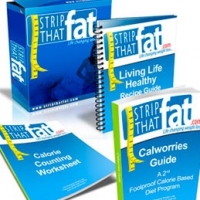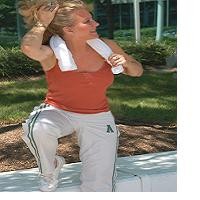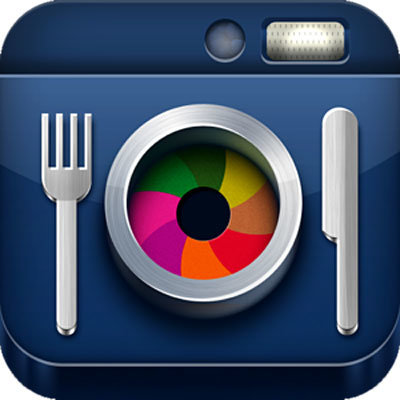Diet Tips
Here is a simple breakdown.
Carbohydrates should be 60% of your daily diet
Carbohydrates are the body's main source of energy. You must consume enough carbohydrates daily to remain healthy. Restricting your calories with low-carbohydrate diets decreases your energy.
Types of Carbohydrates
Simple carbohydrates like (sugars, including glucose and fructose from fruit and vegetables, lactose from milk, and sucrose from cane or beet sugar)
Complex carbohydrates like (carrots, broccoli, corn, potatoes, bread, cereal, pasta, rice, and beans) which contain glucose, fiber, and other nutrients.
Fat should be 30% of your daily diet
Fat adds flavor to food, and is an important component of a healthy diet. Fat is necessary for energy production, transporting fat soluble vitamins, protection of internal organs, insulation, healthy skin, hair, and supplying the linoleic acid[1].
Types of fat
1. Triglycerides are the chemical form in which most fat exists in food as well as in the body. They're also present in blood plasma and, in association with cholesterol, form the plasma lipids.
2. Saturated fats come primarily from animal sources:
EXAMPLES
Butter, whole milk, dairy products, and meats.
Coconut and palm oils are also high in saturated fat. Saturated fat raises cholesterol[2] levels more than any element in your diet. Less than 10% of your daily calories should come from saturated fat sources.
3. Unsaturated fats can be either monounsaturated or polyunsaturated.
Monounsaturated fats. This type of fat can reduce LDL cholesterol without affecting beneficial HDL's. This is the preferred form of fat in a diet.
Examples include olive oil, canola oil, peanut oil, and avocado oil.
Polyunsaturated Fats are divided into omega-6 vegetable oils and omega-3 fish oils.
Examples include sunflower, corn, and sesame. The omega-3 oils come from fish like mackerel, halibut, salmon, albacore tuna, and whitefish.
Benefits of Omega-3 oils are decreased blood pressure, cholesterol, triglycerides, and blood clotting.
THE PROBLEM:
Most people eat almost twice as much fat as the human body is designed to handle. 36% to 41% of total daily calories often come from fat.
Protein should be 10% of your daily diet
Protein builds and repairs muscle, red blood cells, hair, and other tissues. Protein is also necessary for the synthesizing hormones.
Examples from plants include: Fruits, grains, and vegetables.
Examples from legumes include: Dried beans or tofu with rice or bread.
Meat is a good source of protein, but too much may lead to high cholesterol.
Here are some less fatty cuts of meat
Beef……………. Top round, eye of round, round steak, rump roast, sirloin tip, short lion, strip steak lean, lean and extra lean ground beef.
Pork…………… Tenderloin, sirloin roast or chop, center cut loin chops
Lamb………… Foreshank, leg roast, leg chop, loin chop
HOW TO PLAN A DIET
STEP 1
DETERMINE YOU'RE EATING PATTERNS
Take a few days to record what you are eating and drinking, being specific as possible. Logging your diet will give you an idea of what and when you are eating. Tracking your diet is important in determining the changes needed.
Visit
Analyze your log sheet and determine how many calories you consume daily. Calorie intake needs will differ for each individual. Many people mistakenly eat too few calories. Consuming under 1200-calories for women and 1800-calories for men is severely low.
Typically it is best to eat about 500-1000-calories less a day than your total calories burned.
(See Chapter 1: Harris Benedict Equations)
After you determine an estimate of your calorie intake, use the chart below to determine the breakdown where your calories should come from.
STEP 2
PLAN AND MAKE CHANGES TO YOU'RE DIET.
If you are not eating enough, increase your calorie intake. Women and men should eat at least 1200 and 1800 calories a day respectively. Severely restricting calories will result in an eventual weight gain or lack of energy. If you are restricting your calories, start eating more immediately. If you are eating too much start by cutting your portion sizes.
Tips to control Portion size
Decrease your portions by half
You can lose weight and still enjoy your favorite foods. Just decrease your portion sizes by half. Take your typical dinner serving and decrease it by half. Try supplementing your meal with fresh fruit or vegetables on the side. After you eat, wait a few minutes to allow yourself to feel full. You will probably notice you don't feel the urge to eat as much.
Don't eat a three-course meal at restaurants
When dining out, watch how much you are eating. Most restaurants serve huge portions for the main course. Eating an appetizer, main course, and desert is too much food. Many restaurants offer lunch size portions of their dishes, which are smaller than their full-size dinner entrees. In most restaurants you can purchase the lunch size entree at dinnertime. Ordering from the lunch menu helps with portion control.
Don't biggie-size anything
Fast food portions are normally too large. Upsizing meals give you extra food you don't need. If you decide to eat fast food (which should be rare), order the regular size.
Start Reading Labels
Look carefully at the serving size for your food. Find out how many servings you are actually consuming. You will soon know how to measure a serving size simply by looking at the food.
•÷ NO BUFFETS!!!
It is nearly impossible to practice portion control in an "all-you-can-eat" situation. Many individuals mistakenly eat as much as possible in a buffet. This is not good for someone on a diet.
Learn the standards:
3 oz. of meat is the size of a deck of cards or an audio tape; 1 oz. of meat is the size of a matchbook; 1 cup of potatoes, rice, or pasta looks like a tennis ball.
--------------------------------------------------------------------------------
[1] Linoleic acid is a member of the group of essential fatty acids called omega-6 fatty acids, so called because they are an essential dietary requirement for all mammals.
[2] Cholesterol
Cholesterol is a building block of cells, vitamins, and hormones in the body. The human body makes cholesterol in all cells of the body and also gets cholesterol from some foods in the diet. It is transported in the bloodstream to other cells or for elimination by the body.
Cholesterol is a solid fat carried in blood by lipoproteins and deposited in the walls of arteries which therefore narrow and when they block completely cause heart attacks and strokes.
- Prev:Flexibility
- Next:5 Keys To Weight Loss Motivation
Related Articles
-
Wu Long Tea (oolong tea): Does it really help you lose weight?
Youve probably seen the advertisements: Drink wu long tea and lose a j
-
Final Phase Fat Loss Invite Index-Final Phase Fat Loss Scam
Did you lose many opportunities because of your bad looking? Are you a
-
Losing Pounds Through the HCG 1234 Diet Plan
If you want to lose weight effectively, you might want to consider try
-
For Effective Weight Loss - Curb Hunger And Avoid The Binge
Curb Hunger and Avoid The Costly BingeEveryones been
-
Cheap Fat Loss For Those On A Small Budget! Learn Which Programs Are The Least Expensive Yet Still Work Just As Fast! - Ever Loss
CLICK HERE NOW to Download The EverLoss System and Start Losing 23 LBS
-
How to Lose 26 Pounds in 7 Weeks without Giving Up Your Favorite Foods!
How to Lose 26 Pounds in 7 Weeks without Giving Up Your Favorite Foods
- DON'T MISS
- How Can I Get Rid Of Fat Thighs Fast: How To Get Rid Of Inner Thigh Fat
- How Will I Feel On The Medifast Diet?
- Fat Burning Furnace - This is the Easy Diet Youve Been Waiting For!
- Eat (Yes, Eat!) to Lose Weight
- Fat Burning Furnace Exercises
- Cellulite Removal Treatment for Thigh Fats
- Enjoy Thanksgiving Without Gaining Weight
- Weight Loss Tips for a Swimsuit Body
- Fastest Ways to Burn Belly Fat
- Top Diet Plans




